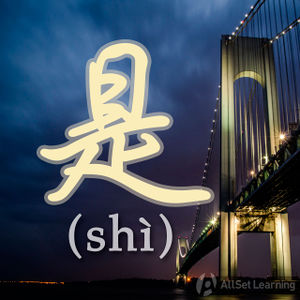Difference between revisions of "The "shi... de" construction for indicating purpose"
m (Simingjie moved page Indicating purpose or intent using "shi...de to Indicating purpose or intent using "shi...de") |
|||
| Line 2: | Line 2: | ||
{{Stub}} | {{Stub}} | ||
| − | There are many ways to explain why you are doing something. This article will explain another way to do that, and it just happens to involve "是...的". This isn't to say that you can't make these sentences without using "是" and "的" but this can help emphasize why you are doing something, giving your sentence a little more kick. | + | There are many ways to explain why you are doing something or what's the use of thing. This article will explain another way to do that, and it just happens to involve "是...的". This isn't to say that you can't make these sentences without using "是" and "的" but this can help emphasize why you are doing something or what's the use of thing, giving your sentence a little more kick. |
== Structure == | == Structure == | ||
| Line 12: | Line 12: | ||
</div> | </div> | ||
| − | + | 如果主语是人,经常在“是”的后面加“来”或者“去”,意思是“来这里”或者“去那里”;如果主语是物,经常在“是”后面加“用来”。结构如下: | |
| + | |||
| + | <div class="jiegou"> | ||
| + | |||
| + | Person + 是 + 来 + Reason/Purpose + 的 | ||
| + | |||
| + | </div> | ||
| + | |||
| + | <div class="jiegou"> | ||
| + | |||
| + | Thing + 是 + 用来 + Reason/Purpose + 的 | ||
| + | |||
| + | </div> | ||
| + | |||
==Examples== | ==Examples== | ||
| − | + | <div class="liju"> | |
| + | *老王 <em>是</em> 来 (这里) 帮 我们<em>的</em>。 | ||
| + | *我 <em>是</em> 来 上海 旅游 <em>的</em>。 | ||
| + | *你 要 记住,你 <em>是</em> 去 (学校) 学习 <em>的</em>,不 是 去 玩 <em>的</em>。 | ||
| + | *这 个 男 孩子 <em>是</em> 来 这里 实习 <em>的</em>。 | ||
| + | *钱 <em>是</em> 用来 花<em> 的</em>。 | ||
| + | *这 间 房子 <em>是</em> 用来 放 杂物 <em>的</em>。 | ||
| + | *这 种 面包 <em>是</em> 用来 做 三明治<em>的</em>。 | ||
| + | </div> | ||
==See Also== | ==See Also== | ||
| + | |||
*[[Uses of "shi... de"]] | *[[Uses of "shi... de"]] | ||
| Line 25: | Line 47: | ||
{{Used for|Emphasizing}} | {{Used for|Emphasizing}} | ||
{{Used for|Expressing purpose}} | {{Used for|Expressing purpose}} | ||
| − | {{Basic Grammar|是|B1|是… 的|我 <em>是</em> 来 | + | {{Basic Grammar|是|B1|是… 的|我 <em>是</em> 来 上海 旅游 <em>的</em>。|grammar point|NEEDCODE}} |
{{Rel char|的}} | {{Rel char|的}} | ||
{{Structure|Sentence Patterns}} | {{Structure|Sentence Patterns}} | ||
Revision as of 08:52, 2 July 2013
-
Level
-
Similar to
-
Used for
-
Keywords
| This article is a stub. Editors can help the Chinese Grammar Wiki by expanding it. |
There are many ways to explain why you are doing something or what's the use of thing. This article will explain another way to do that, and it just happens to involve "是...的". This isn't to say that you can't make these sentences without using "是" and "的" but this can help emphasize why you are doing something or what's the use of thing, giving your sentence a little more kick.
Structure
Subject + 是 + Reason/Purpose + 的
如果主语是人,经常在“是”的后面加“来”或者“去”,意思是“来这里”或者“去那里”;如果主语是物,经常在“是”后面加“用来”。结构如下:
Person + 是 + 来 + Reason/Purpose + 的
Thing + 是 + 用来 + Reason/Purpose + 的
Examples
- 老王 是 来 (这里) 帮 我们的。
- 我 是 来 上海 旅游 的。
- 你 要 记住,你 是 去 (学校) 学习 的,不 是 去 玩 的。
- 这 个 男 孩子 是 来 这里 实习 的。
- 钱 是 用来 花 的。
- 这 间 房子 是 用来 放 杂物 的。
- 这 种 面包 是 用来 做 三明治的。
See Also



